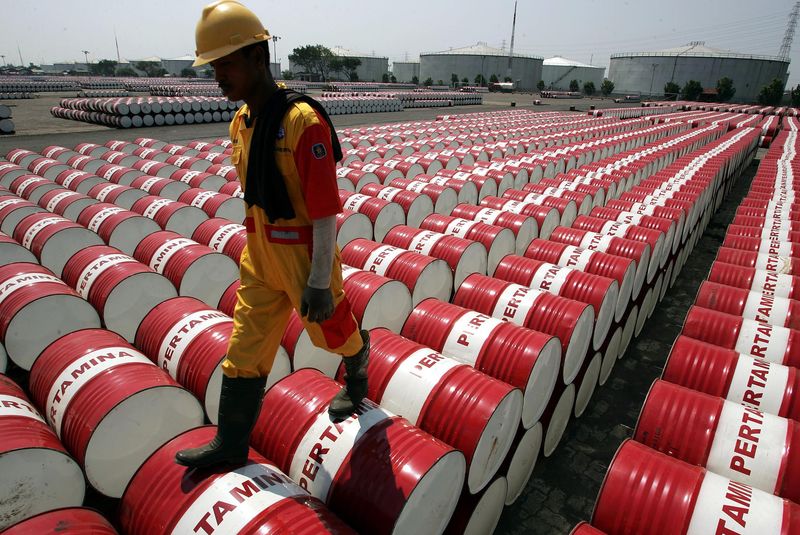Investing.com — U.S. jumped nearly 4 million barrels in the just-ended week, the first surge in five weeks, and fuel inventories rose by as much or more, indicating lower demand as the peak summer driving season drew to a close, the government reported on Wednesday.
The rose by 3.955M barrels during the week ended Sept. 8, according to the Weekly Petroleum Status Report of the U.S. Energy Information Administration, or EIA. Analysts tracked by Investing.com had expected a crude drawdown of 2.481M barrels instead for last week to add to the 6.307M deficit in the prior week to Sept. 1.
On the fuels side, the EIA reported a increase of 5.561M. The forecast consensus had been for a gasoline draw of 0.85M barrels that would have added to the prior week’s decline of 2.666M. Automotive fuel gasoline is the No. 1 U.S. fuel product.
With , there was an official build of 3.931M barrels versus the expected gain of 1.4M and the prior week’s rise of 0.679M. Distillates are refined into , diesel for trucks, buses, trains and ships and fuel for jets.
Fuel Demand Collapses
The growth in both crude and fuel supplies coincided with the official end of the summer driving period in the United States last week, marked by the September 4 Labor Day holiday. Prior to that, refiners had drawn nearly 20 million barrels of crude from inventory over a period of four weeks as they maxed out fuel processing for the summer driving period. Refiners had maintained an extraordinarily high run rate of more than 93% of their capacity during the period.
As of last week, the EIA said although refiners were still running at almost optimum levels, they refined less crude oil for fuel than the prior week.
“Refineries operated at 93.7% of their operable capacity last week,” the agency said in the latest Weekly Petroleum Status Report. “Gasoline production decreased last week, averaging 9.2 million barrels per day. Distillate fuel production decreased last week, averaging 5.0 million barrels per day.”
Demand for fuels also fell as the peak summer driving bowed out, the EIA market summary showed. Total gasoline supplied to the marketplace — a key indicator of consumption — fell to a daily average of 8.307M from the prior week’s 9.321M. Gasoline consumption below the daily mark of 9M is often a red flag for demand, and such usage levels are typical in off-peak periods of demand like now.
Domestic demand for fuels wasn’t the only bearish element of the EIA report.
Exports Down Too, Production at New 3-Year High
The agency also raised its estimate of U.S. oil production for last week to a new 3-year high of 12.9M barrels per day. Until a couple of months ago, crude output from the world’s largest producer of the commodity ranged between 12.1M and 12.2M a day. The current revision means daily production is just 400,000 short of the record high of 13.1M per day averaged in March 2020, just before the coronavirus outbreak which temporarily decimated oil demand.
Alongside domestic demand, exports of U.S. crude — one of the bright spots of the weekly EIA report for months now — fell last week to 3.090M barrels per day from the previous week’s 4.932M.
But imports of crude grew last week as refiners appeared to pull more oil into the country in anticipation of demand. According to the EIA. U.S. crude imports averaged 7.6M barrels per day last week, up 0.812M from the prior week. Such imports, ostensibly done at competitive pricing, raises questions about the so-called aggressive supply cuts by Saudi Arabia, which has been deliberately trying to channel less crude towards the United States in its bid to skew the EIA’s weekly reporting into a more bullish picture for oil.
Joined by the Russians, who announced a 300,000 barrels per day cut from this month, the Saudis’ voluntary reduction of 1.0M barrels daily has had an exaggerated impact on oil prices, sending both global benchmark and U.S. to 10-month highs.
Read the full article here










